An Easy Way to Reduce the Effects of Being in a Chloramine-Rich Pool Environment
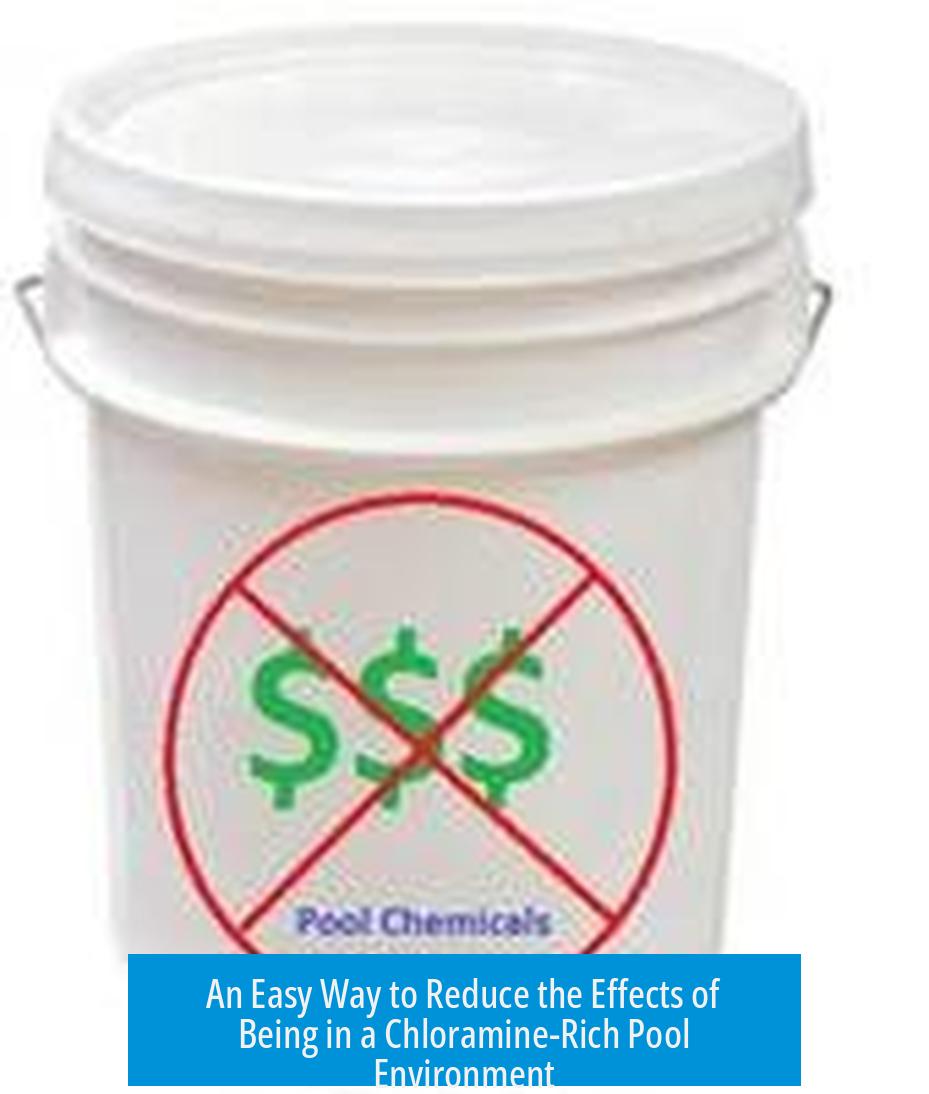
The most effective way to reduce the effects of chloramines in a pool area is to improve ventilation and airflow combined with air purification methods such as activated carbon filters. This approach helps to lower airborne chloramine concentrations and improve air quality.
Improving Air Quality with Air Purification
Chloramines form when chlorine reacts with organic substances, creating irritant gases in pool environments. Using an air purifier equipped with an activated carbon filter can effectively remove chloramines from the air. Activated carbon adsorbs chloramine molecules, reducing their presence near the pool or equipment storage zones.
- Air purifiers with carbon filters target chloramine vapors more effectively than standard filters.
- DIY solutions can also work, such as placing activated carbon pellets atop a dehumidifier exhaust.
Ventilation and Airflow: The Key to Dilution
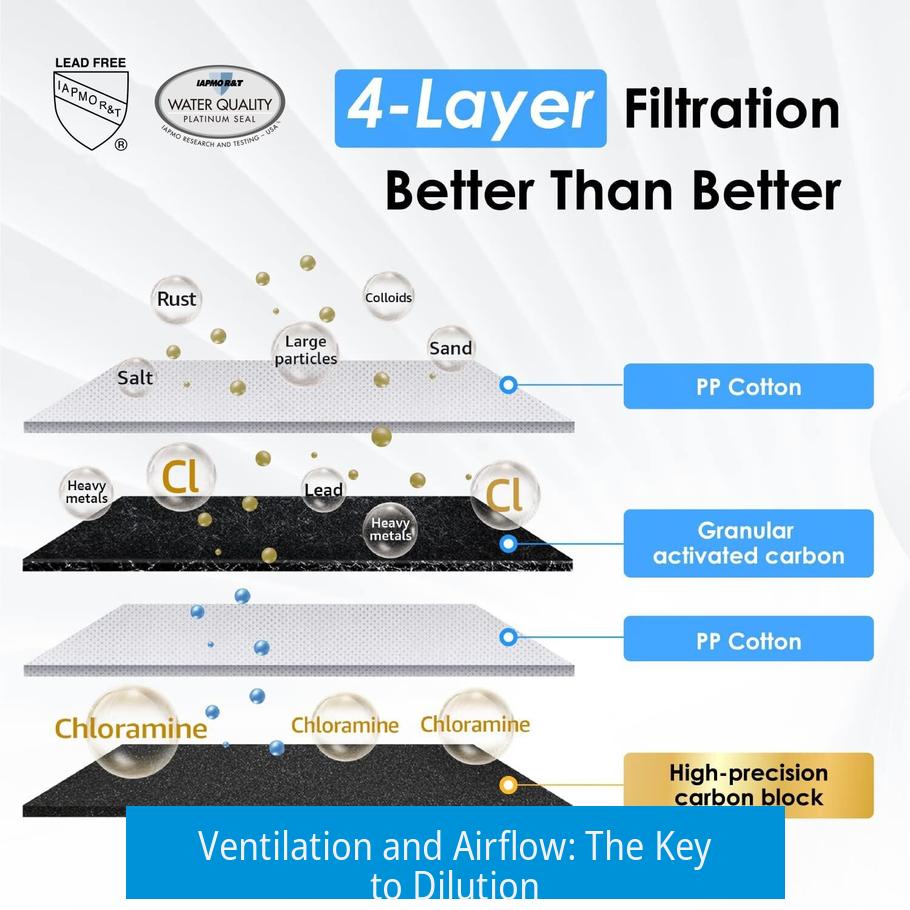
Chloramines as gases penetrate rooms easily, making complete sealing impractical. Ventilation dilutes these irritants, reducing their concentration in the air.
- Open windows or use exhaust fans to increase airflow.
- Ensure continuous circulation to prevent stagnant chloramine buildup.
- Ventilation is the primary defense against gas pollutants in pool areas.
Equipment Care to Reduce Chloramine Residue
Rinsing pool gear before and after use minimizes chloramine accumulation on surfaces. Water treated with fish tank chlorine removal chemicals, like API® Tap Water Conditioner, can neutralize chloramines without leaving harmful residues.
- Spray gear with diluted tap water conditioner and rinse before storage.
- Off-season rinses with dilute sodium thiosulfate remove oxidizing chemicals effectively.
- Sodium thiosulfate acts as a reducing agent that neutralizes chloramines and chlorine.
Managing Humidity and Mold Concerns
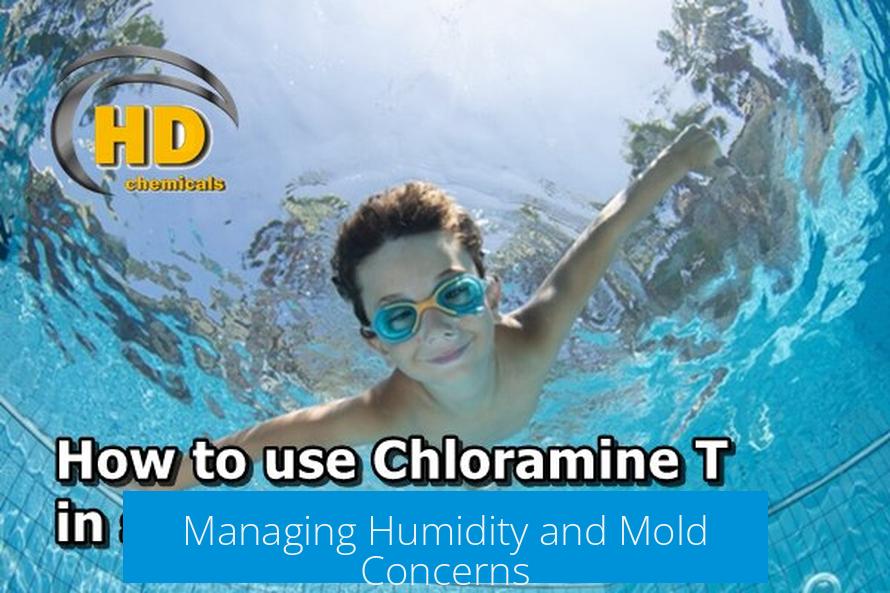
High humidity in pool environments fosters mold growth, compounding air quality issues. Running a dehumidifier reduces moisture, indirectly decreasing chloramine persistence and mold risk.
Key Takeaways
- Use activated carbon filters or DIY carbon setups to scrub chloramines from air.
- Maximize ventilation and airflow to dilute chloramine gases efficiently.
- Rinse pool gear with tap water and chlorine neutralizers to minimize residue.
- Employ sodium thiosulfate rinses off-season to reduce chemical buildup.
- Control humidity with dehumidifiers to prevent mold and reduce chloramine effects.
An easy way to reduce the effects of being in a chloramine-rich pool environment?
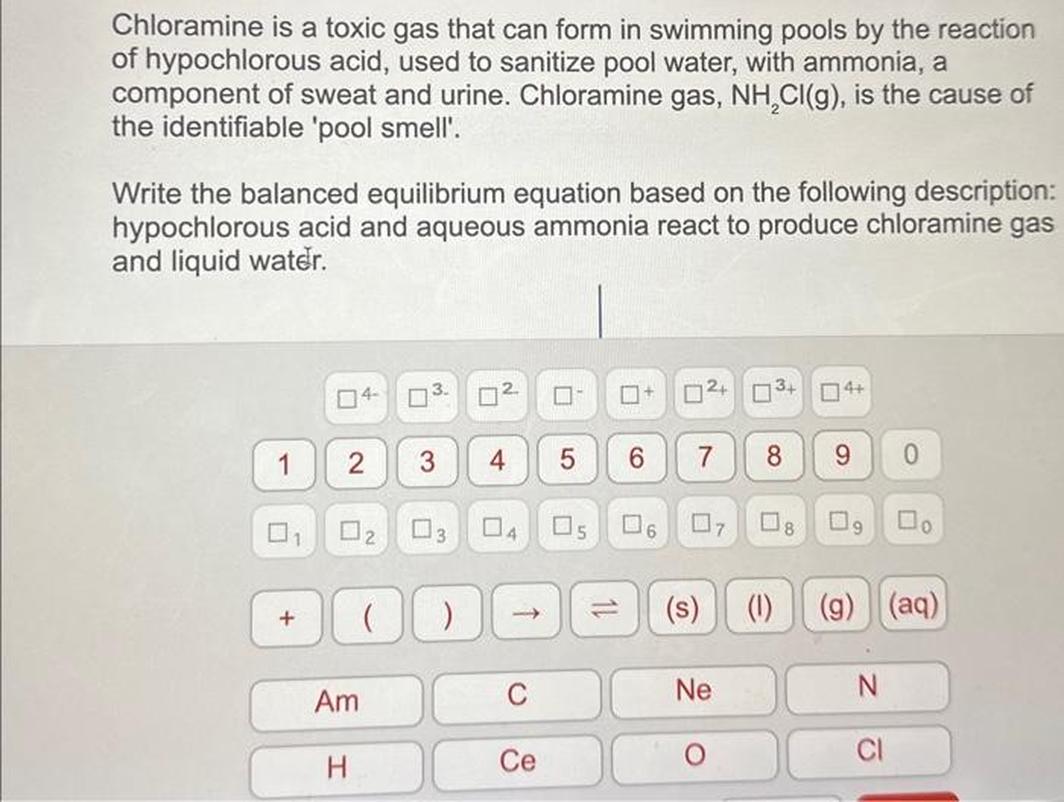
You’ve just finished a refreshing swim, but something feels off. Your eyes sting, your throat itches, and the air smells oddly sharp. What’s going on? It’s those pesky chloramines hanging around the pool area. Chloramines form when chlorine combines with organic matter like sweat, urine, or skin cells. These compounds linger as gases and irritate swimmers and staff alike. So how do you easily reduce the effects of being in this chloramine-rich environment? Let’s dive in.
Why bother with chloramines?
Before we jump into solutions, it’s worth pointing out why chloramines are such a concern. Unlike free chlorine, which sanitizes the water, chloramines are irritants. They make pool air uncomfortable and can cause respiratory issues or skin dryness. Facilities often struggle because chloramines are gases—they sneak everywhere, making the pool deck and gear storage areas inhospitable. That’s why tackling their presence is essential for comfort and health.
Clear the air: Activated Carbon Filters and Dehumidifiers
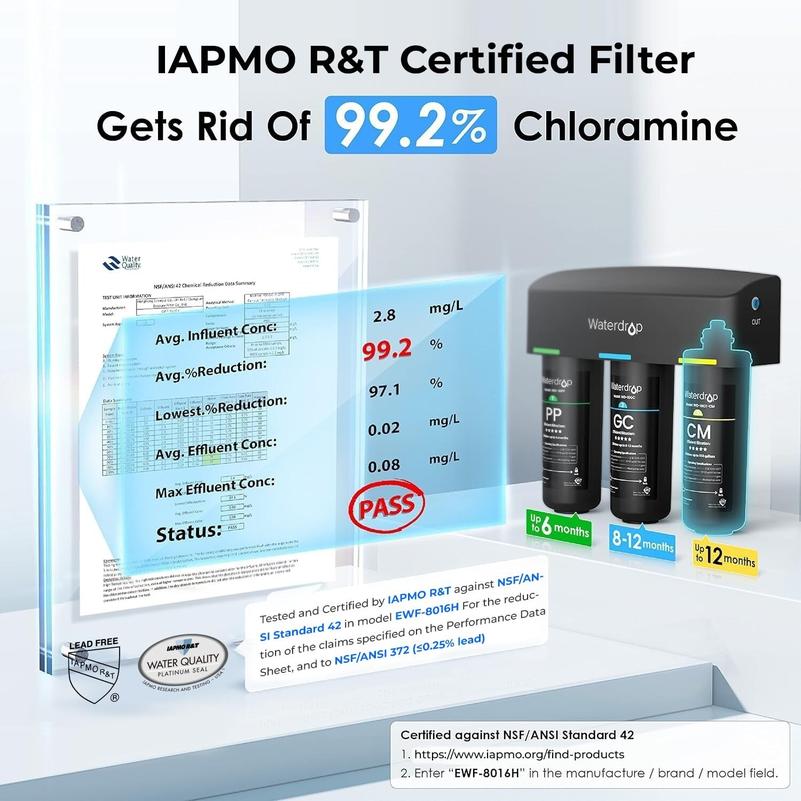
One of the simplest, yet most effective, ways to reduce chloramines is improving air purification. You know those fancy air purifiers touted on TV? Get one equipped with an activated carbon filter. These filters excel at trapping chloramine gases.
Don’t want to spend a fortune? No problem. It’s DIY time. Buy activated carbon pellets from aquarium supply stores and rig them onto your dehumidifier’s exhaust. The dehumidifier pulls moisture from the humid pool air, while the carbon lily pads adsorb nasty chloramines. Double whammy, right?
Running a dehumidifier also helps prevent mold growth—a major issue in warm, humid pool rooms. So you kill two birds with one stone: better air quality and less mold. Who thought dryness could be so glamorous?
Keep it flowing: Ventilation and Airflow
If activated carbon filters are your cleaning squad, ventilation is the bouncer that controls crowding. Chloramine gases are sneaky; they seep through small gaps and cling to surfaces. No room can be hermetically sealed perfectly, so don’t even try.
Your best bet? Increase airflow. Open vents, use fans, and make sure fresh air circulates frequently. Remember the rule of pollution: dilution is a solution. The more fresh air you bring in, the less concentrated chloramines become.
Simple examples include placing exhaust fans near the pool deck or opening windows where possible. It feels basic, but it works wonders. If you want to feel like a ventilation wizard, this is your potion.
Show your gear some love: Rinsing and chemical treatments

Chloramines don’t just affect the air; they linger on pool equipment and gear too. Leaving your kit soaking in chloramine-rich droplets means it’ll keep irritating you later.
Here’s a neat tip: rinse all your swimming gear with tap water before storing it. You can step it up by spraying with a diluted solution of fish tank chlorine removal chemicals. For instance, APIs like API® TAP WATER CONDITIONER remove chlorine, chloramine, and heavy metals instantly. Aquarium enthusiasts swear by it, and if it’s safe for goldfish, it’s safe for your goggles.
For offseason or deep cleaning, use a dilute rinse of sodium thiosulfate. This chemical neutralizes oxidizing agents like chloramines and chlorine. Aquarium experts and agriculture pros use it regularly to detoxify water. It’s also part of some pool shock treatments designed to curb algae—so it knows its stuff.
Why sealing the pool room won’t solve everything
As tempting as it is to slam the windows and slam the door against chloramine invasion, it’s a losing battle. Chloramines are gaseous and move around freely. A perfectly sealed room simply traps these irritants inside, making the air stagnant and nastier.
Moreover, sealed humid environments create perfect conditions for mold and mildew. This is a health hazard on its own. You wouldn’t want your pool area to smell like a damp dungeon—trust me.
Putting it all together: Practical takeaways
- Run a dehumidifier with an activated carbon filter. If budget is tight, DIY an activated carbon filter for your existing dehumidifier using aquarium-grade pellets.
- Increase ventilation wherever possible. Open vents, use exhaust fans, and encourage airflow to dilute chloramines.
- Rinse your pool gear thoroughly. Use tap water first, then consider treating with fish tank water conditioner or a dilute sodium thiosulfate rinse off-season.
- Avoid sealing off pool rooms tightly. Accept that chloramines will drift. Instead, focus on airflow and moisture management.
In essence, reducing chloramine effects isn’t about one magic wand; it’s a thoughtful combination of air purification, ventilation, and gear care. With these practical steps, you’ll cut down the irritation, breathe easier, and enjoy your pool time much more.
Do you suffer from chloramine irritation too?
Maybe you’ve tried some tactics and noticed little improvement. Or perhaps you’re looking to build a cleaner home pool environment. Try mixing these approaches and welcome your healed eyes and soothed throat. After all, swimming should never feel like chemical warfare.
So, grab an air purifier, push those vents open, and give your gear some love. Your lungs—and your goggles—will thank you.
What is a simple way to reduce chloramine levels in pool room air?
Use an air purifier with an activated carbon filter. This type of filter is better at removing chloramines from the air than standard filters.
How can ventilation help reduce chloramine effects?
Increasing airflow and ventilating the pool area dilutes chloramine concentration. More fresh air reduces the buildup of these gases.
How should swimming gear be treated to minimize chloramine damage?
Rinse gear with tap water after use. For extra care, use a diluted fish tank water conditioner to neutralize chloramines before storage.
Can household chemicals be used to remove chloramines from equipment?
Yes. Fish tank water conditioners like API TAP WATER CONDITIONER help remove chloramines. Sodium thiosulfate is another option for off-season rinsing.
Why is sealing a pool room against chloramine gas difficult?
Chloramines exist as gases that penetrate rooms easily. Fully sealing a pool room to block these gases is nearly impossible.


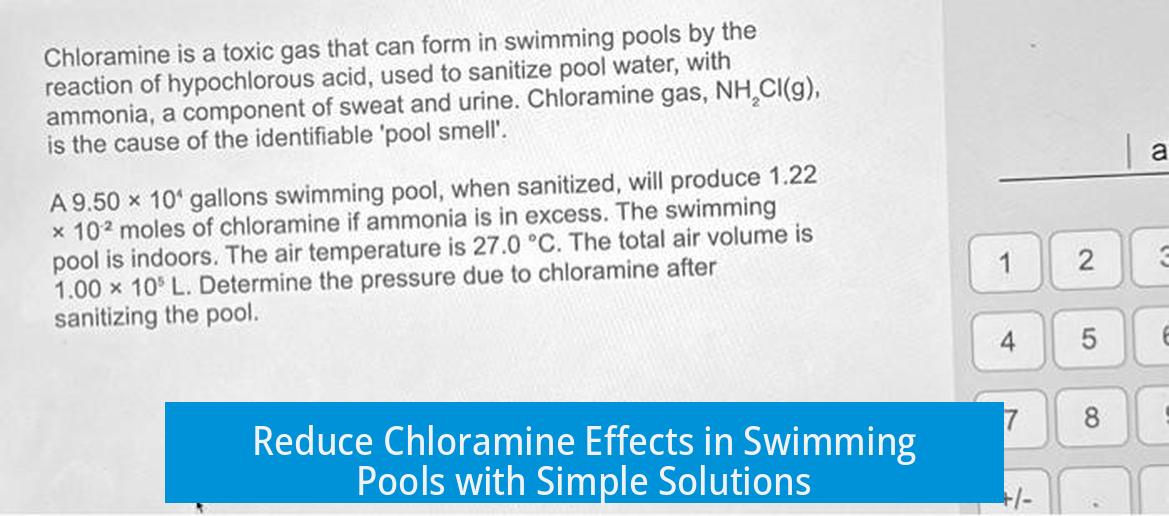
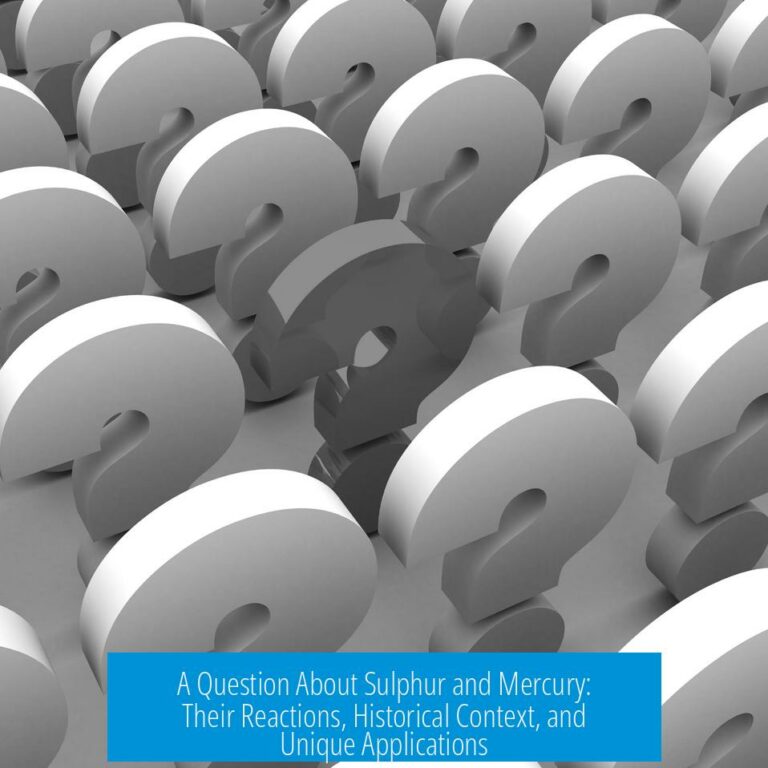
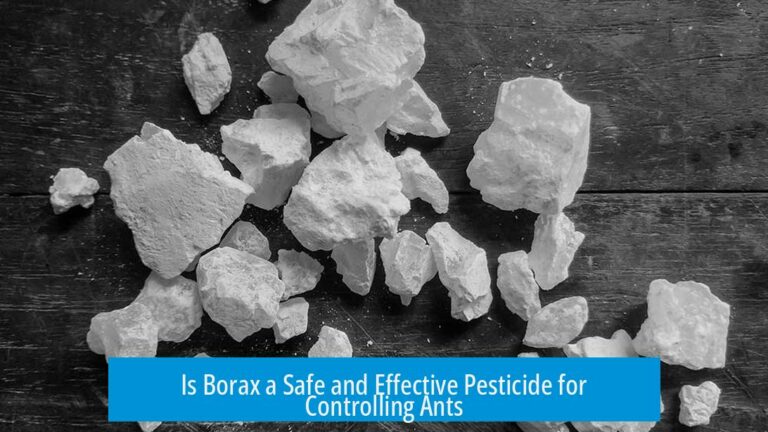
Leave a Comment